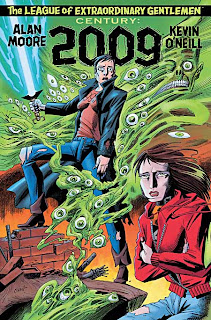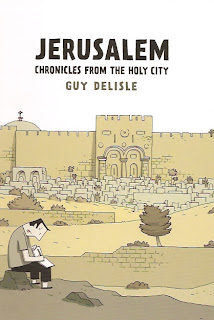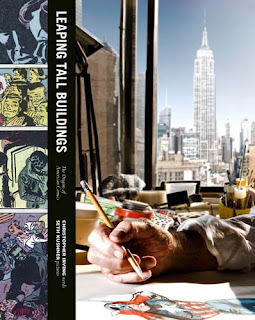Building Stories. Chris Ware. Pantheon.
This massive multi-media presentation includes traditional books, pamphlets, magazines and booklets — 14 in all — with new and previously published material from The New Yorker and other places. Ware’s craftsmanship is obvious, of course, but his gentle storytelling is also up front and central. In this massive collection of connected and semi-detached tales, some of the stories resolve and other sort of trail off, and Ware provides a recommended, though not mandatory reading order. It’s not for everyone but if you’re among the legions of his admirers, this one’s required reading.
The Nao of Brown. Glyn Dillon. SelfMade Hero/Abrams. 208 pages.
Dillon’s earlier career as a comics prodigy was decent enough but not stellar. He migrated to storyboarding and advertising art, eschewing comics until a few years ago. This is the result. Meticulous and vibrant, his stellar depiction of a young British-Japanese woman’s struggles with Obsessive-Compulsive Disorder is one of this year’s best graphic novels. Extra kudos for Dillon’s hand-colored art, which imbues each page with his story’s shifting moods and mélange of emotions.
Happy. Grant Morrison and Darick Robertson. Image. 4 issues. 24 pages each.
This odd and sleazy yarn, featuring an unapologetic cop-turned hit-man, has already been optioned for a movie, announced just after this first of four issues appeared. The other star is the title character; an imaginary anthropomorphic feathered flying unicorn-bunny who is only visible to the nominal protagonist. Though bloody and visceral, with a profusion of F-bombs, Morrison promises a warm and fuzzy tale. Co-conspirator Robertson, who’s previously collaborated, most notably, with star-writers Warren Ellis and Garth Ennis, and was also responsible for some of the better issues in DC’s weekly 52 series, turns in a masterful and nuanced performance, ably abetted by colorist Richard P. Clark.
Marbles: Mania, Depression, Michelangelo, and Me: A Graphic Memoir. Ellen Forney. Gotham. 256 pages.
Does a novel about boredom have to be boring? Forney’s exhilarating and enlightening autobiographical portrait of her bipolar disorder (otherwise known as manic depression), takes the reader on an emotional rollercoaster, an authentic evocation of the author’s journey. Some autobiographies are unnecessarily ponderous; their authors undeserving of the spotlight in even their own stories, but Forney is a great character, definitely worthy of the focus, and well-served by her own prodigious craft. Her clear and thoughtful art provides a powerful, effective and brilliant illumination of this unforgettable adventure.
Fashion Beast. Alan Moore, Malcolm McLaren and Facundo Percio. Avatar. 10 issues. 24 pages each.
Adapted from a near-forgotten script for an unproduced film by Moore (from McLaren’s pitch) written around the same time as his epic Watchmen, this update of the Beauty and The Beast fairy tale is set in the world of urban fashion. Unfolding over ten parts, the stage-setting first two chapters showcase exquisite art by Percio and the promise of a unique and interesting tale.
Superman: Earth One Vol 2. J. Michael Straczynski and Shane Davis. DC Comics. 136 pages.
It’s pretty clear that Straczynski is forging his own continuity for the venerable superhero, well apart from the current mythos of the monthly comics and every earlier iteration. As with the previous volume, this is a modern re-imagining that’s far better than his ill-regarded run (which was really more of a walk) on the comic series, issued just prior to DC’s 2011 reboot of their entire line. Davis’s art is modern and serviceable though hardly memorable. I wish I liked it more. Not surprisingly the story, which picks up shortly after the previous volume, soundly sets up Straczynski’s next chapter, too, signaled by arrival of a pair of lurking Lex Luthors in its closing pages.
Taxes, The Tea Party and Those Revolting Rebels: A History in Comics of the American Revolution. Stan Mack. NBM Publishing. 176 pages.
Mack’s old Village Voice cartoons of overheard real-life conversations held no clue that he would come up with in this terrific all-ages book about the revolutionary roots of American history. The tea party in the title bears no resemblance to the current voluntarily put-upon crew of racists, xenophobes and naysayers who want everyone’s benefits cut but their own. These protestors are colonists who rebelled against the tyranny of corporate rulers and repressive anti-competitive taxation. Mack provides a ground-level view of American history, stripped of platitudes and political correctness. It’s an entertaining and revealing way to learn of our true revolutionary heritage.
Drawn Together: The Collected Works of R. and A. Crumb. Aline and Robert Crumb. Liveright. 272 pages.
This collection of collaborations between husband and wife is a hoot. There’s plenty of sex and randiness, of course, that’s laugh-out-loud hilarious, but there are also gems like “Our Beloved Tape Dispenser,” a heartfelt and lovely story devoted to their actual packing-tape dispenser. Most of the art herein is by Robert, who’s as great a craftsman as ever. But Aline’s humor is fearless and her drawing is quite solid and warmly expressive. What a pair!
Sailor Twain: Or The Mermaid in the Hudson. Mark Siegel. First Second. 400 pages.
Sieigel’s idyllic tale of Mark Twain, Hudson River sea spirits and a wounded mermaid is charming and sublime. The narrative leisurely unfolds but builds progressively into a gripping page-turner. It’s a lyrical and fascinating fable, full of love, magic and grief.
Philosophy: A Discovery In Comics. Margreet de Heer. NBM Publishing. 120 pages.
Comics may be fine medium to educate, but a heady subject like Philosophy wouldn’t seem to lend itself to this visual medium. Wrong! Heer does a wonderful job of explaining philosophy and philosophers in a clear and highly entertaining manner with words and pictures — an impressive achievement!
Originally published in The Miami Herald































